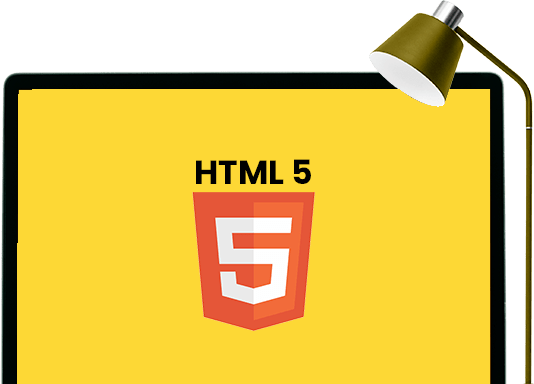Baeugi News Hub
Your source for the latest news and insightful articles.
HTML5: Where Code Meets Creativity
Unleash your creativity with HTML5! Discover coding tips, tricks, and innovations that transform ideas into stunning web experiences.
Exploring the New Features of HTML5: Enhancing Web Creativity
HTML5 has revolutionized the way we create and interact with web content, introducing a plethora of new features that enhance web creativity. One of the most significant advancements is the canvas element, which allows developers to draw graphics on-the-fly using JavaScript. This empowers artists and designers to create complex animations and visual displays without relying on external plugins. Furthermore, the video and audio tags provide a streamlined approach to embedding multimedia directly into web pages, ensuring a smoother user experience and broader accessibility across devices.
Another exciting feature is the incorporation of semantic elements like <article>, <section>, and <header>. These elements not only improve the structure of web documents but also enhance search engine optimization (SEO) by providing better context to content. Developers can now leverage the power of local storage to save user data, enabling richer user interactions and personalizations without constant server requests. Overall, HTML5 is crafting a new landscape for web development, paving the way for more dynamic, engaging, and creative online experiences.

How HTML5 Revolutionizes Multimedia Integration in Web Design
HTML5 has significantly transformed how multimedia content is integrated into web design, simplifying the process for developers and enhancing the user experience. One of the most notable features is the built-in support for audio and video without the need for third-party plugins, which was a common requirement in previous iterations of HTML. This advancement allows designers to embed multimedia elements using simple <audio> and <video> tags, making it easier to incorporate high-quality sound and visual effects directly into web pages. As a result, websites can deliver richer content that is accessible across various devices and platforms.
Furthermore, HTML5 has introduced several new attributes and elements that offer greater control over multimedia playback. For instance, developers can now utilize attributes like controls, autoplay, and loop to enhance the interactivity of media elements. Additionally, the canvas element allows for dynamic, scriptable rendering of 2D shapes and images, enabling designers to create engaging animations and graphics. These features collectively make HTML5 a powerful tool in web design, providing a unified approach to multimedia that promotes creativity while ensuring an optimal user experience.
Top Tips for Harnessing HTML5 to Boost Your Creative Projects
HTML5 has revolutionized the way developers approach web design and digital creativity. By leveraging its powerful features, you can enhance your creative projects significantly. Here are some top tips for harnessing HTML5: first, make use of the semantic elements to improve the structure of your content. By using tags like <header>, <footer>, and <article>, you not only create a more accessible experience but also boost your SEO rankings. Second, take advantage of the canvas element. This allows you to draw graphics and animations directly in the browser, giving you more creative freedom.
Another aspect of HTML5 that can greatly impact your projects is the local storage feature. This functionality lets you save data on the user's device, which can enhance performance by reducing server requests. Additionally, consider implementing the audio and video tags to add multimedia elements easily. To summarize the best practices:
- Utilize semantic elements for better SEO.
- Explore the canvas for graphic creations.
- Leverage local storage for improved efficiency.
- Incorporate audio and video for richer user experiences.